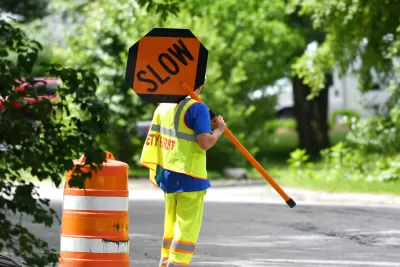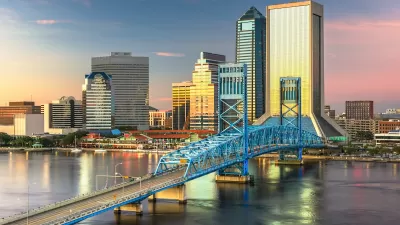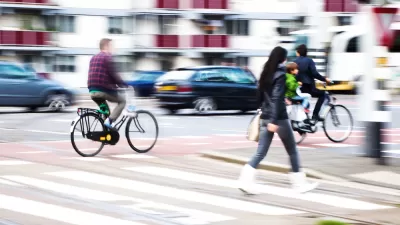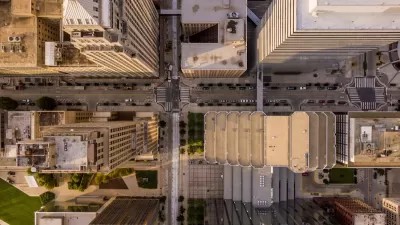The alarming rise in pedestrian deaths across the United States was predicted well before Covid-19 provided more opportunities for dangerous driving behaviors.

A new study from the AAA Foundation for Traffic Safety shows that traffic fatalities in the United States were projected to rise just as sharply even if the pandemic had not shut down roads and created conditions for faster driving, reports Kea Wilson in Streetsblog USA.
According to the study, “pre-pandemic models were already predicting a series of record years for pedestrian deaths, since they'd been trained on more than a decade of increasingly deadly data — and that prediction unfortunately, came true.”
The study finds that one likely explanation for the spike in traffic deaths during the pandemic is “a sharp increase in "aberrant driving behaviors" like speeding regardless of who else was on the road, alcohol-impaired driving, and driving without a license.”
However, principal researcher Brian Tefft cautioned that “we can't blame the roadway death crisis on a few bad-apple drivers cracking under pandemic-era stress — especially when systemic solutions exist to save lives even when motorists are driving like maniacs.” Tefft advises a safe system approach that focuses on design, infrastructure, and technology as ways to reduce risks to drivers and pedestrians. “Impaired driving prevention technology, speed limiters on cars, and speed-reducing road designs could all have curbed the bloodshed during the early days of COVID-19 — just like they could have saved lives before the pandemic and since.”
FULL STORY: Study: The Real Reasons Pedestrian Deaths Surged Along with COVID-19

Manufactured Crisis: Losing the Nation’s Largest Source of Unsubsidized Affordable Housing
Manufactured housing communities have long been an affordable housing option for millions of people living in the U.S., but that affordability is disappearing rapidly. How did we get here?

Americans May Be Stuck — But Why?
Americans are moving a lot less than they once did, and that is a problem. While Yoni Applebaum, in his highly-publicized article Stuck, gets the reasons badly wrong, it's still important to ask: why are we moving so much less than before?

Research Shows More Roads = More Driving
A national study shows, once again, that increasing road supply induces additional vehicle travel, particularly over the long run.

Judge Halts Enforcement of Anti-Homeless Laws in Grants Pass
The Oregon city will be barred from enforcing two ordinances that prosecute unhoused residents until it increases capacity and accessibility at designated camping sites.

Advancing Sustainability in Los Angeles County Schools
The Los Angeles County Office of Education’s Green Schools Symposium brings together educators, students, and experts to advance sustainability in schools through innovative design, climate resilience strategies, and collaborative learning.

Using Old Oil and Gas Wells for Green Energy Storage
Penn State researchers have found that repurposing abandoned oil and gas wells for geothermal-assisted compressed-air energy storage can boost efficiency, reduce environmental risks, and support clean energy and job transitions.
Urban Design for Planners 1: Software Tools
This six-course series explores essential urban design concepts using open source software and equips planners with the tools they need to participate fully in the urban design process.
Planning for Universal Design
Learn the tools for implementing Universal Design in planning regulations.
City of Moreno Valley
Institute for Housing and Urban Development Studies (IHS)
City of Grandview
Harvard GSD Executive Education
NYU Wagner Graduate School of Public Service
City of Cambridge, Maryland
Newport County Development Council: Connect Greater Newport





























